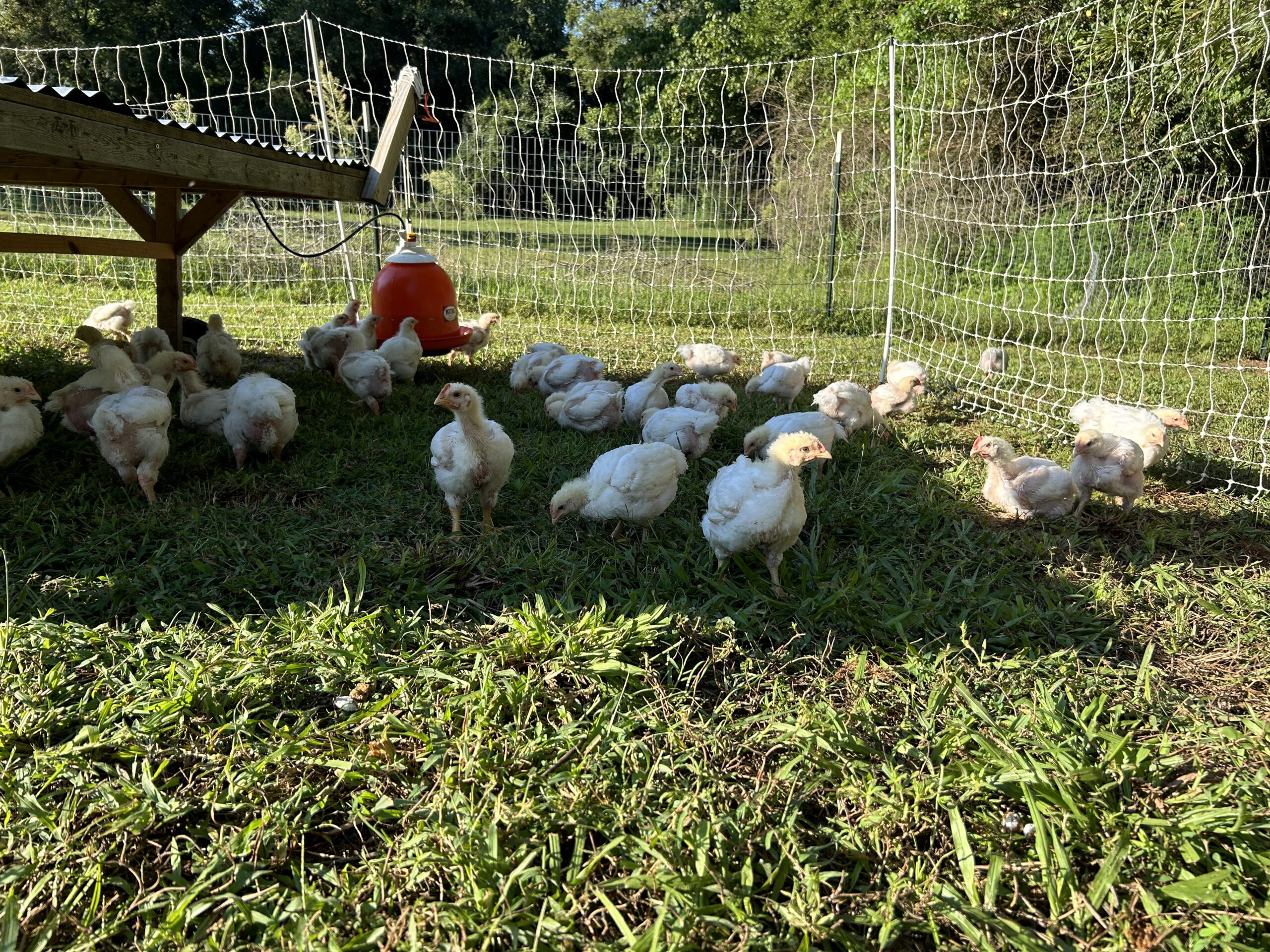At Grey and Bash Farm, we believe food should be grown in a way that restores the land, improves soil health, and benefits both animals and people. That’s why we practice regenerative farming, a system that goes beyond sustainability by actively rebuilding ecosystems while producing nutrient-dense food.
If you’re looking for healthier, more ethically raised poultry—or want to understand why regenerative agriculture matters—this guide will walk you through our pastured poultry system, market garden expansion, and how AI is helping us improve results.
What Is Regenerative Farming & Why Does It Matter?
Regenerative farming is a holistic approach to food production that mimics natural ecosystems. Instead of depleting resources, it improves soil, boosts biodiversity, and increases resilience.
Key Benefits of Regenerative Agriculture:
- Healthier Soil: Practices like rotational grazing and cover cropping enhance microbial life.
- More Nutrient-Dense Food: Studies show food grown regeneratively contains higher levels of vitamins and minerals.
- Better Water Retention: Healthy soil absorbs and holds water, reducing drought risks.
- Carbon Sequestration: Regenerative farms capture carbon from the atmosphere, helping fight climate change.
- Stronger Ecosystems: By avoiding synthetic fertilizers and pesticides, we protect pollinators and wildlife.

How We Use Regenerative Farming in Our Pastured Poultry Operation
At Grey and Bash Farm, our pastured poultry system is designed to improve the land while providing healthier, more flavorful chicken. Here’s how we do it:
1. Rotational Grazing for Soil Health
We move our chickens across fresh pasture every day, allowing the land to rest and regenerate between grazing periods. This prevents overgrazing, improves soil aeration, and enhances natural fertilization.
2. Natural Fertilization Through Manure
Unlike industrial farms where waste is a pollution problem, our chickens deposit manure directly onto the pasture, feeding the soil with nitrogen and organic matter. This replaces synthetic fertilizers and boosts plant growth naturally.
3. Encouraging Biodiversity
Healthy farms support diverse plant and animal life. Our poultry system:


4. Reducing Feed Inputs with Natural Foraging
Chickens naturally scratch, peck, and forage for seeds, insects, and grass. This lowers our grain feed requirements while enhancing the nutritional value of our meat.
5. Improving Carbon Sequestration in Our Pastures
By building soil organic matter, we help trap more carbon from the air, making our land more resilient to drought and extreme weather.

Regenerative Practices in Our Market Garden Expansion
This year, we’re expanding our regenerative practices to a small market garden, using soil-friendly techniques to grow nutrient-dense vegetables and herbs.




By applying these same soil-regenerating principles to our garden, we’ll be able to provide chemical-free, nutrient-rich produce alongside our pastured poultry.
How We Use AI & Technology to Enhance Regenerative Agriculture
Technology is revolutionizing regenerative farming, helping us track soil health, grazing patterns, and animal welfare more effectively. Here’s how we’re incorporating AI and smart tech on our farm:
1. AI-Powered Pasture Monitoring
We’re exploring satellite imagery and drone-based AI to analyze pasture health, monitor forage regrowth rates, and ensure optimal rotational grazing.
2. Smart Watering Systems for Efficient Irrigation
Our market garden will include automated irrigation and soil moisture sensors, ensuring crops receive the perfect amount of water—reducing waste and improving drought resistance.
3. Digital Soil Health Tracking
Using farm management software, we’ll track:


4. AI-Driven Sales Forecasting
We’re integrating AI tools to analyze sales trends and customer demand, allowing us to:



How We Measure the Results of Regenerative Agriculture
Unlike conventional farming, regenerative agriculture measures success by land improvement, not just yield. Here’s how we track our progress:





We believe true farm success isn’t just about production—it’s about leaving the land healthier than we found it.
Join the Regenerative Farming Movement
By adopting regenerative farming and AI technology, we’re raising food in a way that heals the land, produces better-tasting meat, and builds a more sustainable future.




Every meal made with ethically raised, regeneratively grown food makes a difference. Thank you for being part of this movement!


Leave a Reply